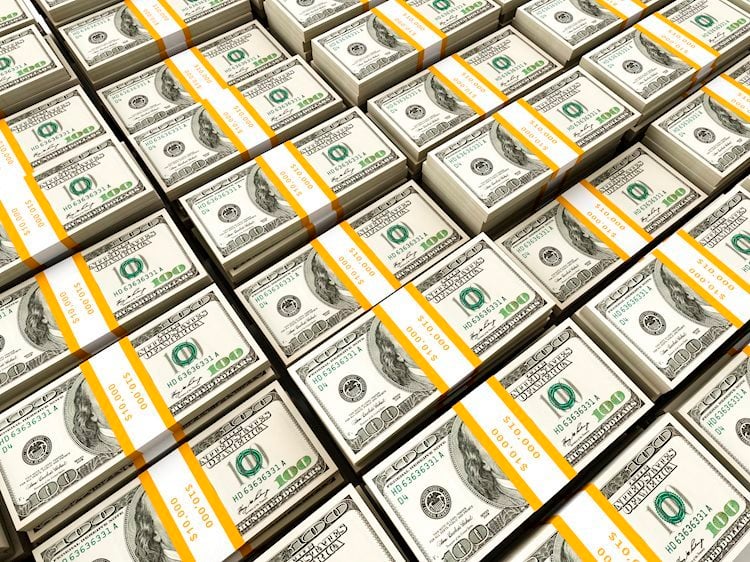- The US Dollar eases back to earlier levels for this week.
- Markets are seeing US equities trying to stage turnaround and head back into Risk On.
- The US Dollar retreats further below 105.00, heading to 104.50 again.
The US Dollar (USD) is fully retreating from its peak performance on Wednesday. All gains that got booked on the bond market massacre the day before, are being erased after the US Gross Domestic Product (GDP) print. When diving into the details, the GDP print revealed that consumers are getting hurt under the current market conditions with Personal Consumption sliding from 2.5% to 2.0% in the second reading for the number.
On the economic data front, a busy economic calendar for this Thursday, with already some pivotal data being released: the US Gross Domestic Product. Even though it is the second estimate for Q1, again a softer reading was enough to ease the US Dollar further. The closing remarks from two US Federal Reserve members will be interesting to see.
Daily digest market movers: Softer GDP, Housing data horror
- Most important data points already got released:
- Weekly Jobless Claims:
- Initial Jobless Claims grew from last week 216,00 against 219,000 for this week.
- Continuing Jobless Claims have risen, though came in under expectations, from 1.787 million to 1.791 million.
- The second estimate of the US Gross Domestic Product numbers for the first quarter:
- The Price Index remained stable at 3.1%.
- Headline GDP went to 1.3% from the 1.6% expansion initially estimated.
- The headline Personal Consumption Expenditures (PCE) eased a touch from 3.4% to 3.3%.
- The core PCE went alongside with headline PCE from 3.7% to 3.6%.
- The Goods Trade deficit for April went substantially wider from $-92.3 billion to $-99.4 billion where a contraction of the deficit was expected.
- Wholesale Inventories for April went from a -0.4% to +0.2%.
- Weekly Jobless Claims:
- Pending Home Sales turns into a massacre for this month, with slide from the +3.6% in March to a -7.7% for April.
- Around 16:05 GMT, Federal Reserve Bank of New York President John Williams delivers keynote remarks at a lunch organized by the Economic Club of New York.
- Near 18:30 GMT comments are expected from Federal Reserve Bank of Dallas President Lorie Logan, who delivers a speech at an event organized by The Borderplex Alliance.
- European equities are further advancing in the green after the US GDP release. US eauiqities are trying to head into the green with the Dow Jones dragging.
- According to the CME Fedwatch Tool, Fed Fund futures pricing data suggests a 52.5% chance for keeping rates unchanged in September, against 42.1% chance for a 25 basis points (bps) rate cut and a 4.9% chance for an even 50 bps rate cut. A marginal 0.6% price in an interest rate hike.
- The benchmark 10-year US Treasury Note trades around 4.56%, steady for now.
US Dollar Index Technical Analysis: Consumers hurt
The US Dollar Index (DXY) has strengthened in the past few hours ever since markets saw yields soaring higher. This, in its turn, asked for a repricing of the Greenback in its stance against other currencies when looking at the rate differential. While US yields were sprinting higher, widening the gap with other countries, the US Dollar outperformed against other currencies.
On the upside, the DXY index reclaimed the key levels: the 55-day Simple Moving Average (SMA), currently at 104.96, and the 105.00 big round level. It will be important to see if these levels hold support should the US data weaken. Once that is proven, look for 105.52 and 105.88 on the upside.
On the downside, the 200-day SMA at 104.43 and the 100-day SMA around 104.37 are the last line of defence. Once that level snaps, an air pocket is placed between 104.30 and 103.00. Should the US Dollar decline persist, the low of March at 102.35 and the low from December at 100.62 are levels to consider.
GDP FAQs
A country’s Gross Domestic Product (GDP) measures the rate of growth of its economy over a given period of time, usually a quarter. The most reliable figures are those that compare GDP to the previous quarter e.g Q2 of 2023 vs Q1 of 2023, or to the same period in the previous year, e.g Q2 of 2023 vs Q2 of 2022. Annualized quarterly GDP figures extrapolate the growth rate of the quarter as if it were constant for the rest of the year. These can be misleading, however, if temporary shocks impact growth in one quarter but are unlikely to last all year – such as happened in the first quarter of 2020 at the outbreak of the covid pandemic, when growth plummeted.
A higher GDP result is generally positive for a nation’s currency as it reflects a growing economy, which is more likely to produce goods and services that can be exported, as well as attracting higher foreign investment. By the same token, when GDP falls it is usually negative for the currency. When an economy grows people tend to spend more, which leads to inflation. The country’s central bank then has to put up interest rates to combat the inflation with the side effect of attracting more capital inflows from global investors, thus helping the local currency appreciate.
When an economy grows and GDP is rising, people tend to spend more which leads to inflation. The country’s central bank then has to put up interest rates to combat the inflation. Higher interest rates are negative for Gold because they increase the opportunity-cost of holding Gold versus placing the money in a cash deposit account. Therefore, a higher GDP growth rate is usually a bearish factor for Gold price.













